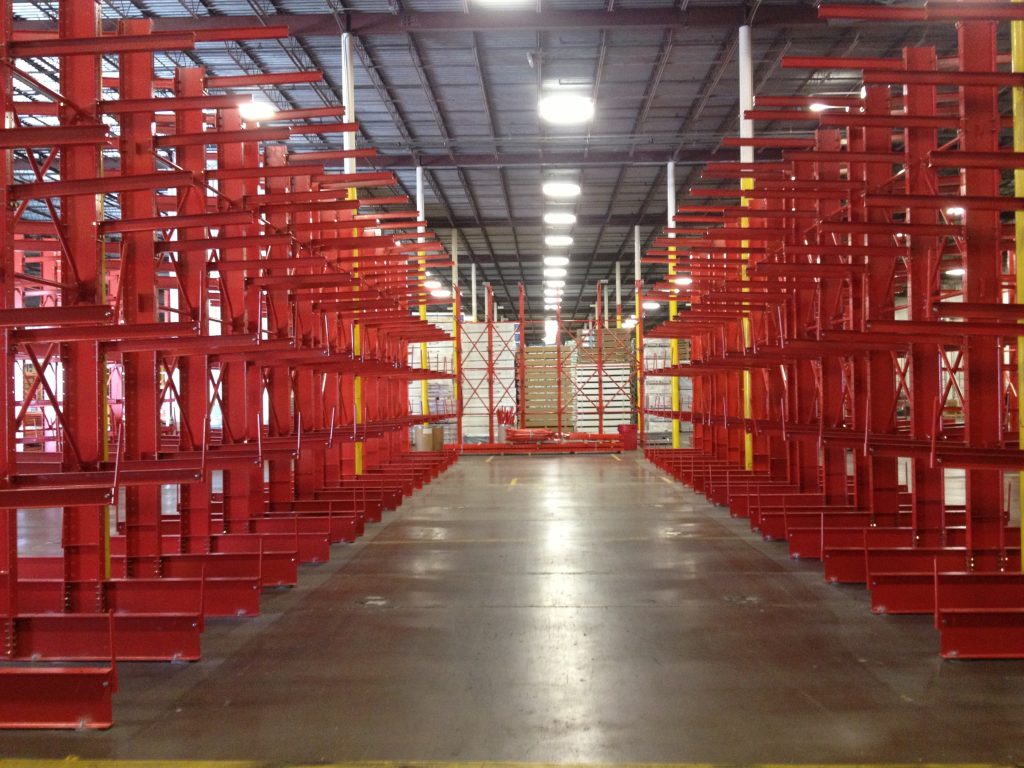Designed for storing long, bulky items such as lumber, piping, or textiles, cantilever racking is the go-to storage rack for differently-sized and shaped inventory. Cantilever rack gets inventory off the warehouse floor or yard and into organized, easy to access shelves.
Cantilever rack is a series of vertical columns fitted with sturdy arms that cantilever out at a slight angle to support the load. The arms bolt to the columns for easy installation and repositioning in the event of inventory changes. Arm height is customizable to accommodate the unique size and quantity of your load.
Advantages | Considerations:
- Light, medium, and heavy-duty system design
- Adjustable arm positioning along the column
- Configure for single or double-sided use
- Easy access to inventory – No front column obstruction
- Make use of vertical warehousing space
- Decking options available
While cantilever rack looks relatively simple, there are important design considerations to address before ordering your rack system.
Design Considerations for Cantilever Rack
- Choose roll-formed or structural steel columns and arms
- Determine rack height
- Select arm style based on inventory specs
- Decide on punch increments for adjusting arms
- Establish the number of arms needed to support the load and avoid deflection
- Calculate arm length for proper load placement
Once customized to your needs, the cantilever system will provide efficiency and cost savings for decades if properly maintained.
Types of Cantilever Racking Arms
- Straight – used for flat products, i.e., wood, sheet metal, and construction materials. They typically mount with a two to four-degree incline and hold 250 – 2000 lbs. per arm.
- Inclined – used for round inventory like tubing, PVC, and cylindrical items. The arms have an upward slope forcing stock to rest near the connection between the column and arm to secure the load.
- Axel – allow rollers to connect at the endpoints to easily roll material off the arms as needed for carpeting, fabric, and wrapping.





